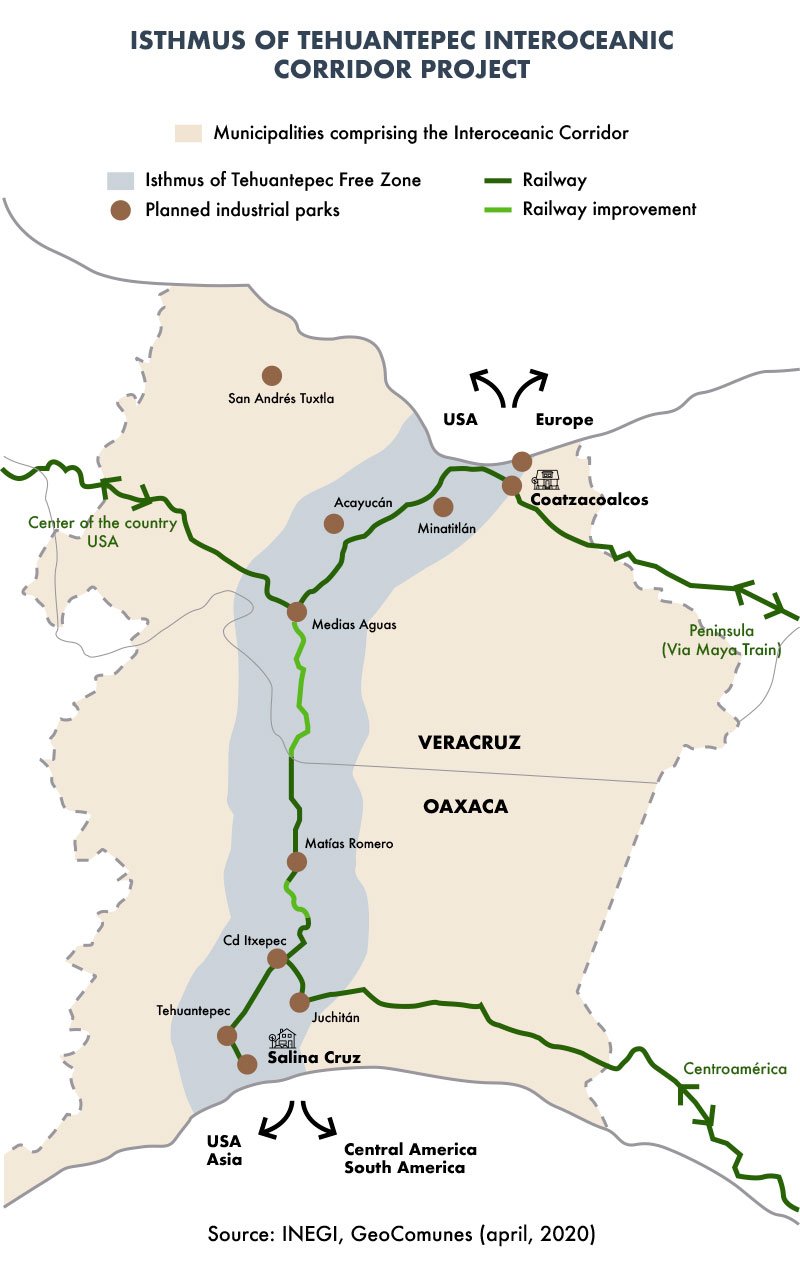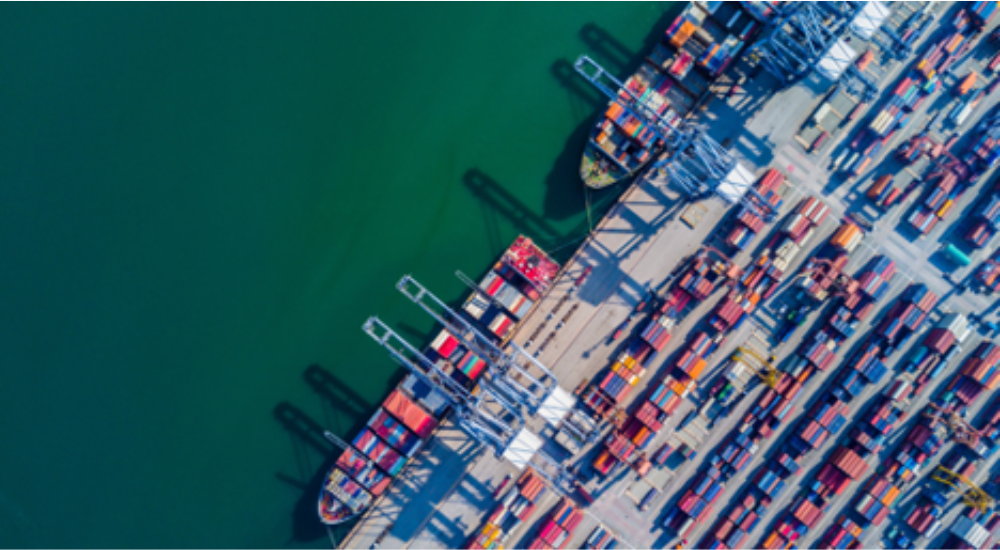Can the interoceanic corridor give short-term answers to boost industries?
8/08/2023The project for the construction of an interoceanic corridor in the Isthmus of Tehuantepec, which would connect the Caribbean Sea and the Pacific Ocean through a large-scale project in southern Mexico, has been contemplated by the Mexican National Hydrocarbons Commission for several years as an option to reduce the transportation time of petroleum and petroleum derivatives from the Gulf of Mexico to Asia compared to the Panama Canal.
According to studies conducted by the commission, the project would reduce the travel time for oil vessels to the locality of Chiba, Japan, from 25 to 17 days, compared to the time of transportation through the canal mentioned above.
The commission also considers the advantages of using existing pipelines to increase the volume of shipments in the transportation process. Beyond being favorable, the project would boost southern Mexico’s economy and industrial activity by creating railway, port, airport, and road infrastructure along a 309-kilometer stretch.
Accelerating the development of this plan would establish a significant logistics corridor in southern Mexico, which could affect the states of Veracruz, Oaxaca, Tabasco, Campeche, and even Chiapas and the industrial park in Merida.
However, the interest in its execution presents the difficulty that it requires substantial investment, leading the Mexican government to offer financing conditions to private enterprises to promote the region's development in the medium and long term.
The project's implementation would attract private investment in industrial parks in the region, which the state intends to promote through the creation of Welfare Development Poles. These are delimited areas with suitable conditions for economic activities that drive economic growth in the region.

Incentives for Business Attraction
In May 2023, the Mexican government announced a series of incentives aimed at attracting investors to develop the first 6 development poles in the Isthmus of Tehuantepec, which include:
- Accelerated depreciation for the first 6 years, allowing companies to deduct a higher portion of fixed asset costs in the early years of acquisition. This results in a more significant deduction in the initial years and reduces the investor's tax burden during that period instead of spreading the speculation over the asset's lifespan.
- Exemption from VAT (Value Added Tax) within the poles and in commercial transactions between them for 4 years.
- 100% income tax exemption for the first 3 years, with the chance of extending it to a 50% exemption for an additional 3 years and increasing the percentage based on the number of jobs created.
These measures by the Ministry of Economy apply to the first stage of development of the poles corresponding to the Interoceanic Corridor, out of the total 10 poles contemplated in the project that aims to boost the industry in the region, thanks to the existence of multimodal transportation alternatives, including improved railway routes and infrastructure in the ports of Coatzacoalcos, Veracruz, and Salina Cruz, Oaxaca.
However, despite the promising industrial and economic development outlook in southern Mexico, the proposal faces significant challenges. These include establishing itself as an alternative in a region with an existing interoceanic crossing route. Moreover, due to the multimodal combination, the total transportation cost raises shipping expenses.
The doubts about boosting construction
Consolidating the option as a favorable way against an already established interoceanic route in Central America is the main obstacle to attracting the necessary logistics operators who, due to the scale of operations, could make the proposed infrastructure usage profitable. In this regard, time works against the planning process, considering the volume of goods required to justify the demand for a new transportation way for massive commercial exchanges in Latin America.
Regarding industrial and logistical activities, Frontier Industrial offers an internationally acclaimed infrastructure for industrial projects in the most significant areas of Mexico, including the industrial park in Merida. If your company wants to establish operations in the country as part of relocation and nearshoring strategies, do not hesitate to contact us.






.png)
